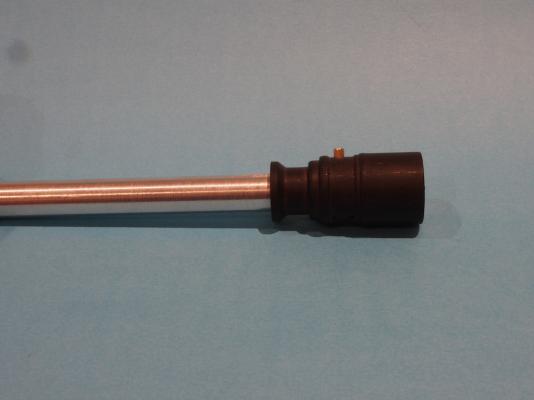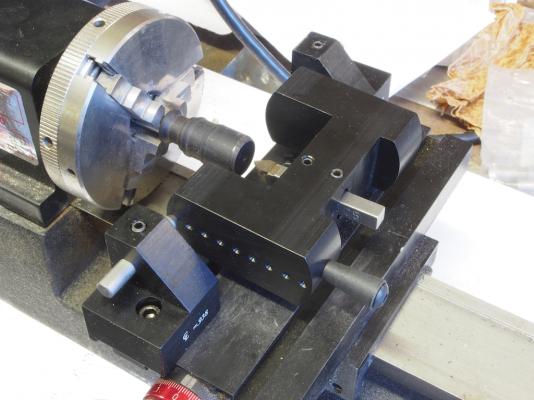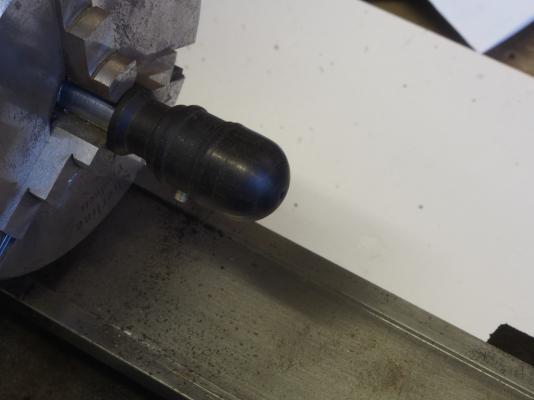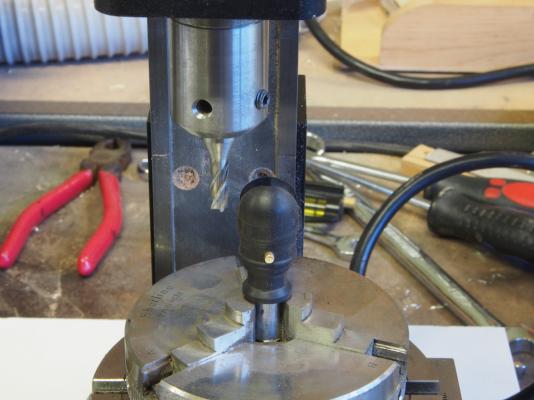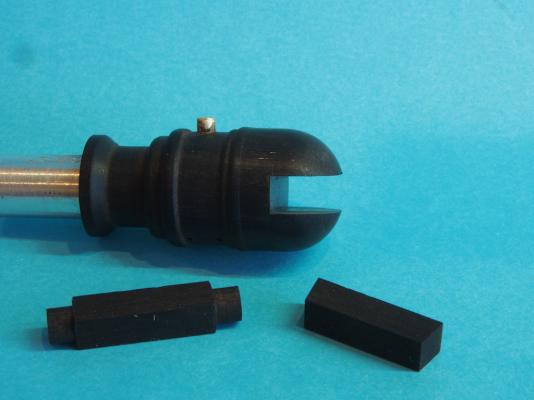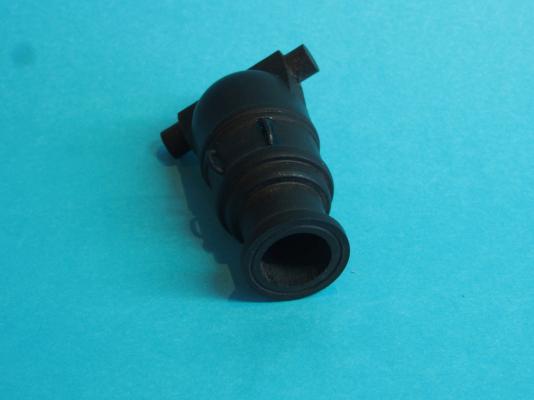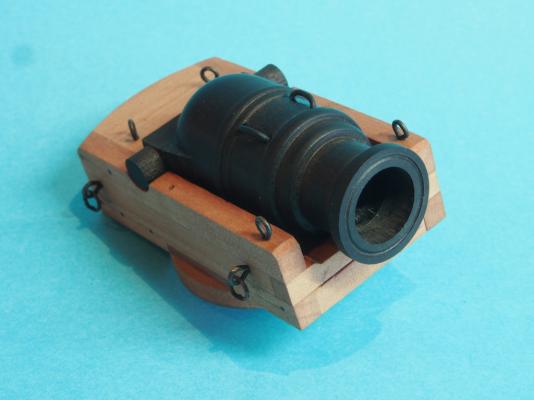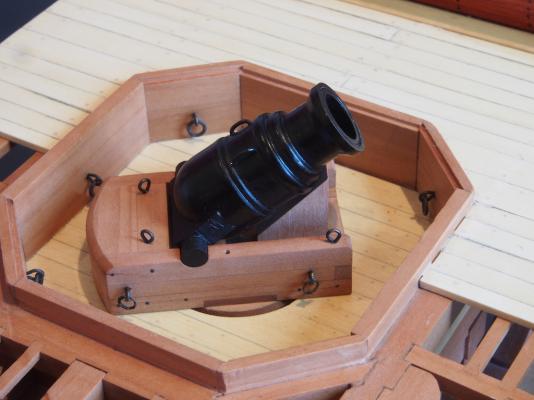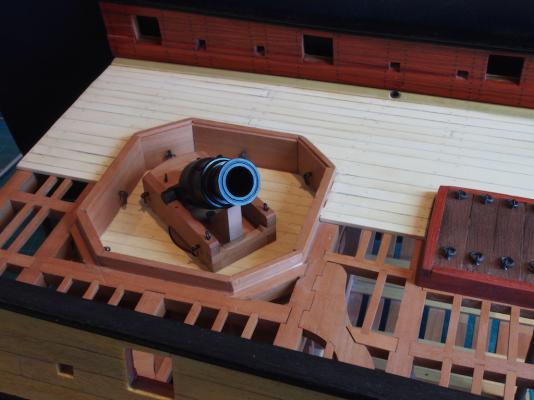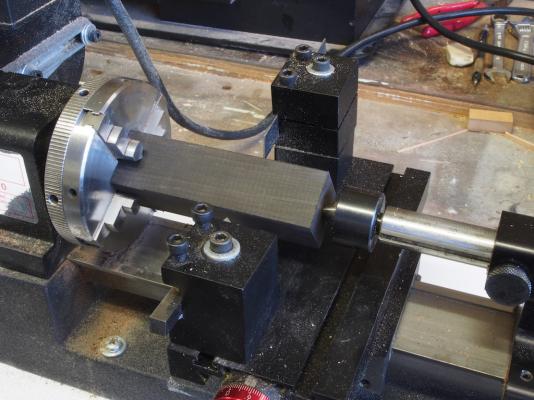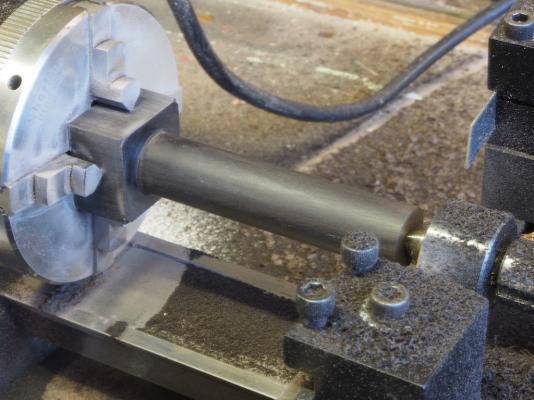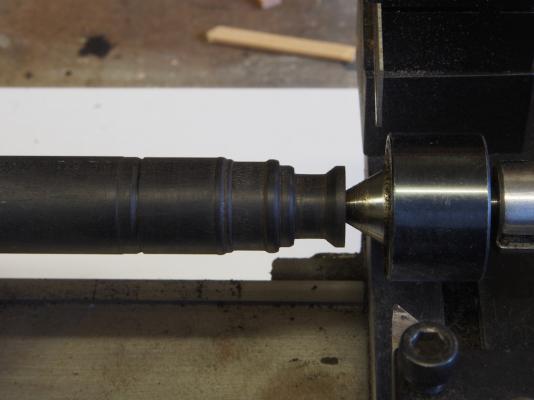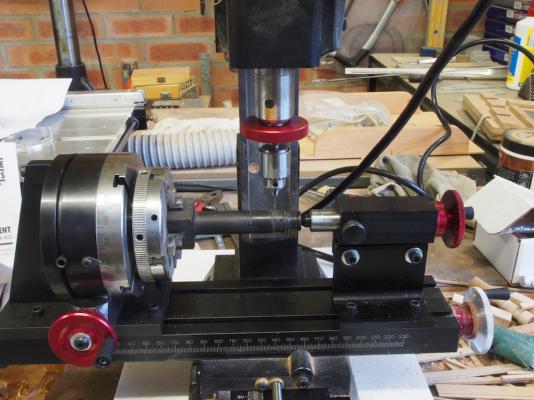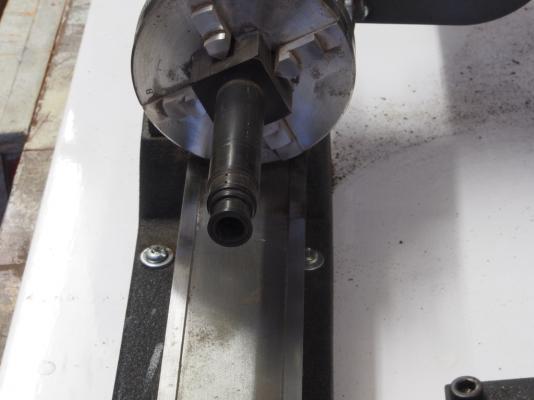-
Posts
4,888 -
Joined
-
Last visited
Content Type
Profiles
Forums
Gallery
Events
Everything posted by gjdale
-
Outstanding Nils! Looking just fabulous.
- 2,625 replies
-
- kaiser wilhelm der grosse
- passenger steamer
-
(and 1 more)
Tagged with:
-
Hey Danny, As someone once said to me, where did you get that giant fake hand? :D
- 99 replies
-
Now that is simply stunning work Nils. Great job!
- 2,625 replies
-
- kaiser wilhelm der grosse
- passenger steamer
-
(and 1 more)
Tagged with:
-
Excellent work Mobbsie. That mortar barrel turned out exceptionally well - I think you under-rate your skills and abilities with that lathe! You are now officially ahead of me once more - and I'm very happy with that!!!
- 255 replies
-
- granado
- bomb ketch
-
(and 2 more)
Tagged with:
-
Welcome to the forum Glenn. This looks like a very interesting project, so I'm taking a front row seat to follow along here.
-
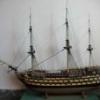
Cutter Cheerful 1806 by rafine - FINISHED
gjdale replied to rafine's topic in - Build logs for subjects built 1801 - 1850
Gorgeous Bob! Simply outstanding.- 525 replies
-
- cheerful
- Syren Ship Model Company
-
(and 1 more)
Tagged with:
-
Fascinating to watch your progress Nils. Simply excellent work.
- 2,625 replies
-
- kaiser wilhelm der grosse
- passenger steamer
-
(and 1 more)
Tagged with:
-

Cutter Cheerful 1806 by rafine - FINISHED
gjdale replied to rafine's topic in - Build logs for subjects built 1801 - 1850
Excellent looking planking job there Bob.- 525 replies
-
- cheerful
- Syren Ship Model Company
-
(and 1 more)
Tagged with:
-
That's a particularly clever piece of design/engineering for raising the mast Danny!
- 99 replies
-
Good to see you back at it Mobbsie. Glad to hear that my mistakes have served a purpose in giving you a heads up! Brave call on the scuppers but they worked out a treat. Everything is looking great - you'll be caught up to me in no time.
- 255 replies
-
- granado
- bomb ketch
-
(and 2 more)
Tagged with:
-

Cutter Cheerful 1806 by rafine - FINISHED
gjdale replied to rafine's topic in - Build logs for subjects built 1801 - 1850
Very nice Bob!- 525 replies
-
- cheerful
- Syren Ship Model Company
-
(and 1 more)
Tagged with:
-
Martin, Just thought I'd throw in my two cents on your "tooling up". Living in Australia, I too have to contend with horrendous shipping costs and unfavourable exchange rates. But I decided to bite the bullet and buy the Byrnes saw and disc sander, and the Sherline lathe and mill. And I don't regret a single cent they cost me. All of them are a joy to use. Remember the old saying, "quality is remembered long after price is forgotten". Also, Sherline offer a range of packages for both lathe and mill, and (I think) a combination of both. The Sherline range of accessories seems almost endless too! By the way, lovely build you have going here!
- 133 replies
-

Looking for a Bench Top Drill Press
gjdale replied to FlounderFillet5's topic in Modeling tools and Workshop Equipment
Max, I have this Proxxon drill press: http://www.proxxonworld.com.au/product/bench_drill_tbm_115_110-120v (I have the 240V version) It seems to be very good quality and is a pleasure to use. Ignore the pricing - that's Australian dollars. You should be able to get a good price through John (Texxn5) who is an agent for Proxxon in the U.S.- 31 replies
-
- Drill Press
- Microlux
-
(and 1 more)
Tagged with:
-
Love that last jig Danny - brilliant in its simplicity and clearly works very well.
- 99 replies
-
Wow! And I thought the first one was pretty darn good! Great job Remco.
- 1,214 replies
-
- sloop
- kingfisher
-
(and 1 more)
Tagged with:
-
Thanks Frank. I still consider myself very much a novice at this, but one who is willing to have a go and learn along the way. Picking up tips from people such as yourself helps to understand the capabilities of the machines and how to use them. Then it's just a case of putting them into practice - that s the easy part!
-
Great looking fleet there John.
- 2,250 replies
-
- model shipways
- Charles W Morgan
-
(and 1 more)
Tagged with:
-
Mortar Barrel continued.... Once the barrel had been bored, it was time to part off the workpiece to its final length and shape the base end. A mandrel was then turned down from some aluminium bar stock, so that it was an easy slide fit in to the barrel, and this was then drilled with a 3/32” end mill, using the same set-up on the Mill as previously. The mandrel was then placed inside the barrel and a securing pin of 3/32” brass rod was inserted to hold the mandrel securely in place. The pin was a tight push fit, which made the whole assembly quite secure. Now it was time to break out the “secret weapon”. The base of the Mortar Barrel is a hemisphere in shape. I’d been pondering how to achieve this, when I discovered that Sherline make a “Radius Turning Attachment” for exactly this purpose. Happy days – a solution to my quandary AND a new accessory! Here is a picture of the setup, showing the mortar barrel being held in a 3-jaw self-centring chuck by the temporary mandrel. The radius turning tool is mounted on the cross slide and is quick and easy to set-up and to use. In this picture, I’ve already started to shape the end, having taken the first couple of passes with the tool. A few minutes later and voilà, a perfect hemisphere: Prior to commencing to use the radius turning tool, I had used a small centre drill to mark the centre of the end of the base. Once the radius had been turned, a 3/16” end mill was inserted in the tailstock, and a hole drilled to a depth of 5/16” – the reason will become clear shortly. With this hole drilled, the workpiece was again moved across, with the chuck, onto the rotary table on the Mill, this time mounted in the horizontal position. The 3/16” end mill was transferred to the Mill and the previously bored hole was used to index the mill table into alignment. The pin in the mandrel was used as a guide to align the barrel such that a slot could now be cut at 90-degrees to the pin. In the following picture, the slot has already been cut to the depth of the previously bored hole (ie 5/16”). The base of the mortar barrel is an interesting configuration, and includes the trunnion bar that also blends into the mortar barrel body. I elected to make this in two pieces, both from 3/16” square stock. The first piece would carry a trapezoid shape to blend into the barrel body, while the second piece would have its end turned into a cylindrical shape to form the trunnions. Sounds complex, but was really quite easy. A piece of 1/4" square stock was first re-sized to 3/16” square using the Brynes disc sander. The trapezoid shape was also achieved using the disc sander, while the trunnion bar was simply turned down on each end in the lathe. Here is a picture of the components prior to assembly: The pieces were then assembled and the mandrel and locating pin removed. The hole from the locating pin was filled by a mixture of PVA glue and some of those ebony shavings saved from the first part of the process. Two handles were made by bending a piece of 1/32” brass wire, chemically blackened and epoxied in place. Here is the final product prior to receiving a coat of Wipe-On Poly: And here it is with a “test” fit to the Turntable: The completed assembly was given a coat of Wipe-On Poly, and then posed in the firing position for a few final photos (the poly is not yet dry here, hence the slight sheen): All in all, I’m well pleased with the way this turned out. Time spent up front measuring and working out the workflow process was well invested, as was the money spent on the radius turning attachment. Amazingly, there were no re-dos in the entire process! Next up – the 4-pounder guns and carriages.
- 456 replies
-
- finished
- bomb ketch
-
(and 2 more)
Tagged with:
-
Thanks again one and all for all the encouraging comments and the "likes". Life's been a bit hectic lately, so it's been a little while between updates. I also needed to do some thinking about the next stage, as well as acquiring a new "secret weapon" (more on that later). At last, this weekend I got to spend some quality time in the shipyard and am well pleased with the results. I have completed the making of the Mortar Barrel, and documented my process fairly thoroughly in the hope that it may help others who progress down this path, or who (like me) are still novices in the world of machining. This post will therefore be in two parts. The Mortar Barrel The Mortar Barrel is another challenging but fun mini-project in its own right. I decided to turn the Barrel from Ebony, so the starting point was a 1” square piece of Ebony about 90mm long. I chucked this in a self-centring 4-jaw chuck, drilled a centre hole in one end, and mounted it with a live centre. The first job was turn the square to a round, with a diameter equal to the maximum diameter of the Mortar Barrel. Not having much experience in turning Ebony (or anything else for that matter) I used only very light cuts of about 0.25mm depth – it took a while! And here’s what was removed to allow the cylinder to emerge: Once that little mess was cleaned up, it was time to cut in the various sections of the barrel and reinforcing bands. I had spent quite a bit of time with the drawings and a ruler measuring where all of these went, and writing myself a set of step-by-step instructions to make the task easier. This paid off and all went well. I had to do quite a bit of swapping out of cutting bit from right to left hand bits, and while this is no big deal, it did illustrate the advantage of having a quick-change tool post. (Something to add to the never-ending “accessories to purchase” list!). At this point I decided it was a good time to drill the holes to take the “handles”, so the whole piece was transferred in the chuck to the Milling machine. I mounted the chuck directly onto the rotary table, which itself was mounted on a right-angle attachment. A right angle tailstock completed the setup, and we were ready to use the sensitive drill attachment, equipped with a No.67 drill bit. The rotary table was used to position two sets of holes, 60 degrees apart. While still in this configuration, I swapped out the drilling attachment for a 3/32” end mill, rotated the piece so that bottom dead centre was facing up, and drilled a hole near where the bottom of the barrel bore would be (more on that shortly). Then it was time to transfer the workpiece, still in the chuck, back to the lathe, where a 5/16” end mill was used to bore out the bore. An end mill was used in preference to a drill bit for this as it has cutting edges on the sides as well as the end, and so makes a very neat job. The bore was taken down to the bottom of what would become the mid-section of the barrel. (It was very difficult to get a decent photo of this on the lathe). Continued next post........
- 456 replies
-
- finished
- bomb ketch
-
(and 2 more)
Tagged with:
About us
Modelshipworld - Advancing Ship Modeling through Research
SSL Secured
Your security is important for us so this Website is SSL-Secured
NRG Mailing Address
Nautical Research Guild
237 South Lincoln Street
Westmont IL, 60559-1917
Model Ship World ® and the MSW logo are Registered Trademarks, and belong to the Nautical Research Guild (United States Patent and Trademark Office: No. 6,929,264 & No. 6,929,274, registered Dec. 20, 2022)
Helpful Links
About the NRG
If you enjoy building ship models that are historically accurate as well as beautiful, then The Nautical Research Guild (NRG) is just right for you.
The Guild is a non-profit educational organization whose mission is to “Advance Ship Modeling Through Research”. We provide support to our members in their efforts to raise the quality of their model ships.
The Nautical Research Guild has published our world-renowned quarterly magazine, The Nautical Research Journal, since 1955. The pages of the Journal are full of articles by accomplished ship modelers who show you how they create those exquisite details on their models, and by maritime historians who show you the correct details to build. The Journal is available in both print and digital editions. Go to the NRG web site (www.thenrg.org) to download a complimentary digital copy of the Journal. The NRG also publishes plan sets, books and compilations of back issues of the Journal and the former Ships in Scale and Model Ship Builder magazines.



